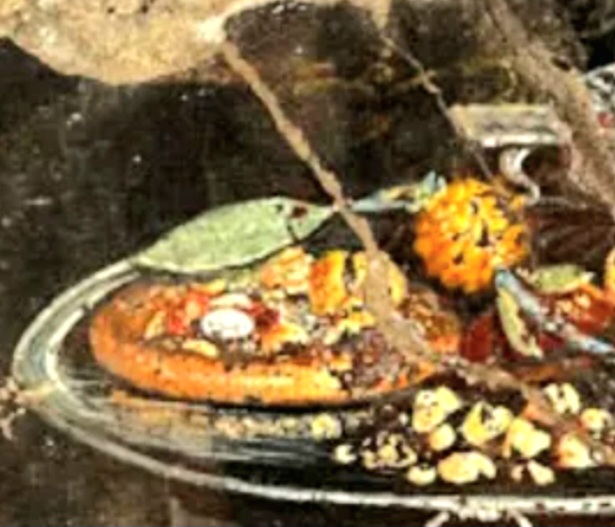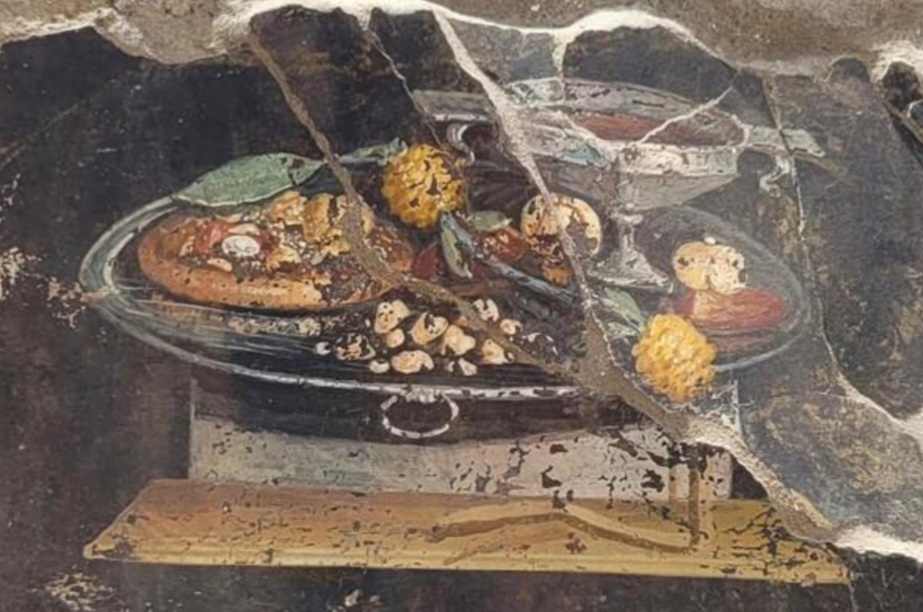Pizza, a beloved culinary delight enjoyed by millions worldwide, holds a fascinating history that stretches back centuries. Surprisingly, recent excavations in Pompeii, the ancient Roman city frozen in time by the eruption of Mount Vesuvius, may have shed new light on the early origins of this iconic dish. Join us as we embark on a journey through time, unraveling the evolution of ancient pizza in Pompeii.
Pompeii, once a bustling city near Naples, Italy, flourished during the Roman era. Buried under volcanic ash for centuries, its ruins have provided a treasure trove of information about daily life, culture, and even the gastronomic preferences of its inhabitants. Amidst the excavation efforts, a remarkable mural depicting a pizza-like dish was unearthed, offering a tantalizing glimpse into the culinary practices of ancient Pompeiians.
The mural’s depiction of a pizza without tomatoes and cheese raises questions. Tomatoes were not introduced to Europe until the 15th century, and cheese might not have been widely used in ancient Roman cuisine.
I still think that looks like cheese on the pizza and some pineapple on the side while we are about it.

“A dish made typically of flattened bread dough spread with a savory mixture usually including tomatoes and cheese and often other toppings and baked”.
The oldest recorded use of the word “pizza” can be found in a Latin text from Gaeta, an ancient town in the Byzantine Empire, dating back to 997 AD. The text mentions an agreement where a tenant was required to provide the bishop of Gaeta with twelve pizzas on Christmas Day and another twelve on Easter Sunday every year.
In conventional thinking a pizza should contain tomatoes and cheese.
The legend of the modern pizza is closely intertwined with Queen Margherita of Italy. According to popular belief, in 1889, Queen Margherita visited Naples along with her husband, King Umberto I. During their visit, a renowned pizza chef named Raffaele Esposito was commissioned to create a special pizza to honor the queen. Esposito crafted three pizzas, one of which caught the queen’s attention.
This particular pizza featured the colors of the Italian flag: red tomatoes, white mozzarella cheese, and green basil. Legend has it that Queen Margherita was so enamored by the flavors and simplicity of this pizza that it was named “Pizza Margherita” in her honor. The queen’s endorsement of this new variation of pizza helped elevate its popularity throughout Italy and eventually worldwide.
Today, Pizza Margherita remains an iconic and beloved pizza style, representing the rich culinary heritage of Italy.

Experts and researchers have put forth various interpretations to unravel the mystery of the Pompeiian pizza mural. Some suggest that the depiction represents an early precursor to pizza, employing locally available ingredients and toppings of the time. Others propose that it might represent a distinct flatbread dish that shares similarities with pizza but possesses its own unique identity.
Beyond the debate surrounding its authenticity, the mural serves as a significant window into the culinary practices of ancient Pompeiians. It provides valuable insights into the diverse range of dishes they enjoyed, showcasing their creativity and gastronomic preferences. The absence of tomatoes and cheese challenges us to broaden our understanding of ancient flavors and adapt our definition of pizza accordingly.
The mural in Pompeii depicting a pizza-like dish presents a captivating mystery. Its missing ingredients emphasize the evolution of culinary traditions. Pompeii continues to provide insights into ancient Roman culture, leaving us intrigued and inspired to explore further.
If you enjoyed this blog post, please consider buying us a coffee.
